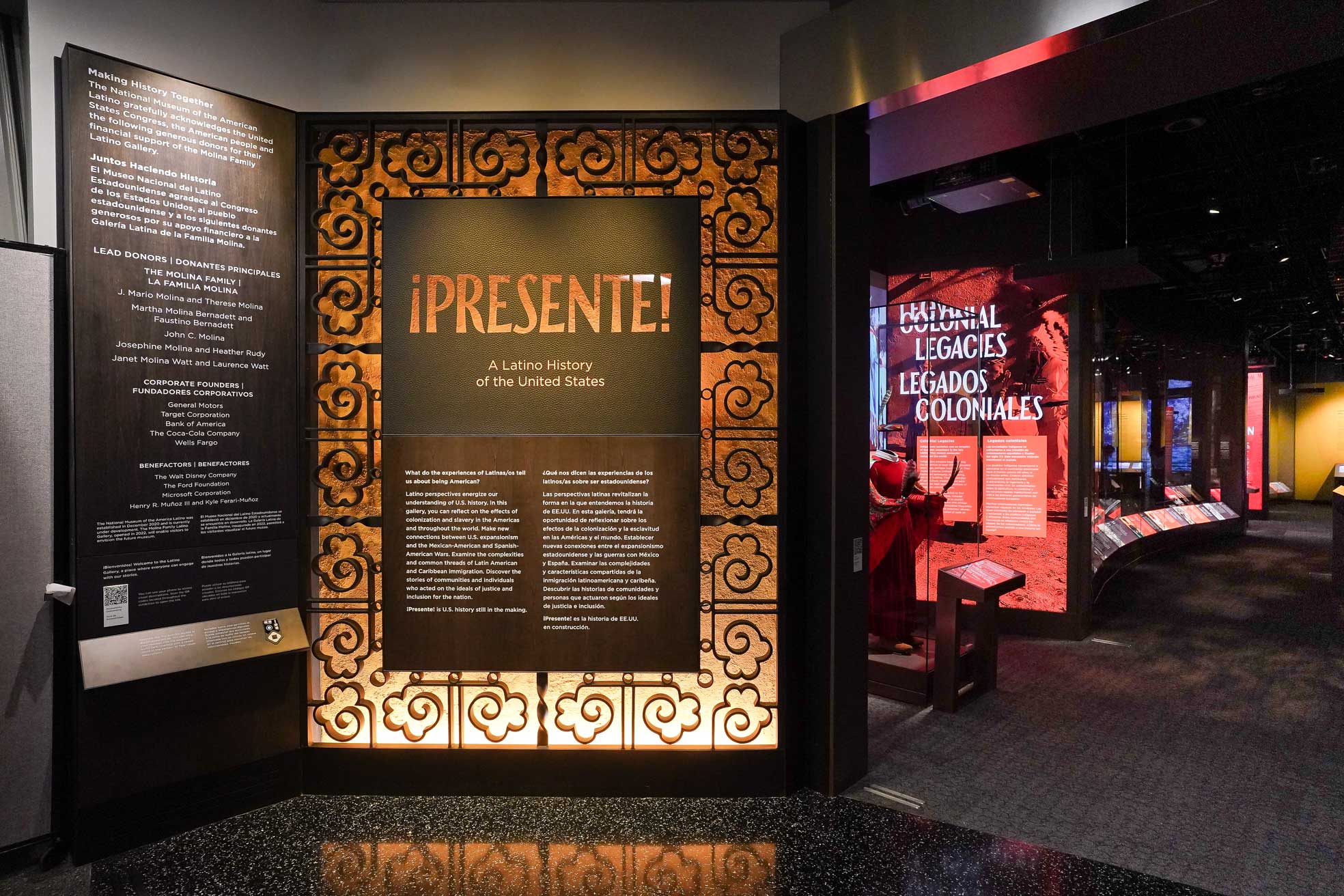Five objects from the new National Museum of the American Latino gallery
On June 18, the Smithsonian’s National Museum of the American Latino opened its first-ever exhibition, “¡Presente! A Latino History of the United States” at the Smithsonian’s National Museum of American History. The Molina Family Latino Gallery is the first iteration of the National Museum of the American Latino, which will offer exhibitions and programs over the course of 10 years leading up to the opening of the museum’s building.
In the “¡Presente!” exhibition, reexamine what you know about U.S. history by learning more about Latino identity, immigration, historical legacies, and how Latinas and Latinos have shaped the nation.
These five objects are featured in the gallery, which you can also explore online.

Mexican American artist Judy Baca envisions community murals as public spaces for retelling history and including everyone’s stories.
Baca came of age during an era of Mexican American civil rights activism known as the Chicano Movement. For her and her fellow activists, public art is a tool for empowering communities.
Her best-known work is the Great Wall of Los Angeles, a mural depicting the complex history of marginalized people in California from prehistoric times through the 20th century. It spans half a mile and is still a work in progress. Baca’s projects have employed more than 400 youth and their families from diverse social and economic backgrounds.
These paint-splattered boots she wore while painting murals are now in the Smithsonian’s National Museum of American History collection.

In July 1992, two men used this handmade raft—3 feet wide by 6.5 feet long—to flee Cuba for the U.S. They were among tens of thousands of refugees who fled in secret in the 1990s, when Cuba faced economic hardships and barred its citizens from leaving the island without permission.
The raft body is made of materials like styrofoam and wood, with tar and cloth coating the exterior, likely to protect from sharks and water flooding.
The U.S. Coast Guard picked them up 35 miles off Florida's coast. While they survived the dangerous journey, many other balseros (or rafters) did not.
The raft was donated to Smithsonian’s Anacostia Community Museum by Humberto Sanchez, who worked with Hermanos al Rescate (Brothers to the Rescue), a nonprofit organization founded by Cuban exiles to save balseros.

In 2017, artists Veronica Meléndez and Kimberly Benavides began printing La Horchata, a magazine (or zine) to give greater visibility to Central American art. The pair grew up in Maryland with family from El Salvador and Guatemala. Their self-produced publication is named after a sweet traditional drink.
This is issue #8 of La Horchata, “En los tiempos de cuarentena (In Times of Quarantine).”

The Chumash are a group of related Native peoples of coastal southern California whose homelands are centered around Santa Barbara and the Northern Channel Islands. European colonization, and in particular Catholic missions, ended the political independence of Indigenous Chumash communities. After Mexican Independence from Spain in 1821, the Mexican government converted much of their land into private ranches.
For thousands of years, Chumash women have been making baskets for domestic use. This Chumash basket tray is from around 1880 and in the collection of the Smithsonian’s National Museum of the American Indian.

The United Farm Workers (UFW) movement is the most iconic Latino civil rights struggle. The UFW, founded in 1962, organized Filipino and Mexican American agricultural workers to demand fair wages and safer working conditions.
In addition to marches, picketing, strikes and boycotts, the movement inspired the creation of accessible art. They used posters, musical theater, and murals to mobilize Mexican American communities and their allies.
This UFW poster from the Smithsonian’s National Museum of American History, by the Women’s Graphic Collective from around 1972, urged consumers to show their support by refusing to buy lettuce and grapes.

